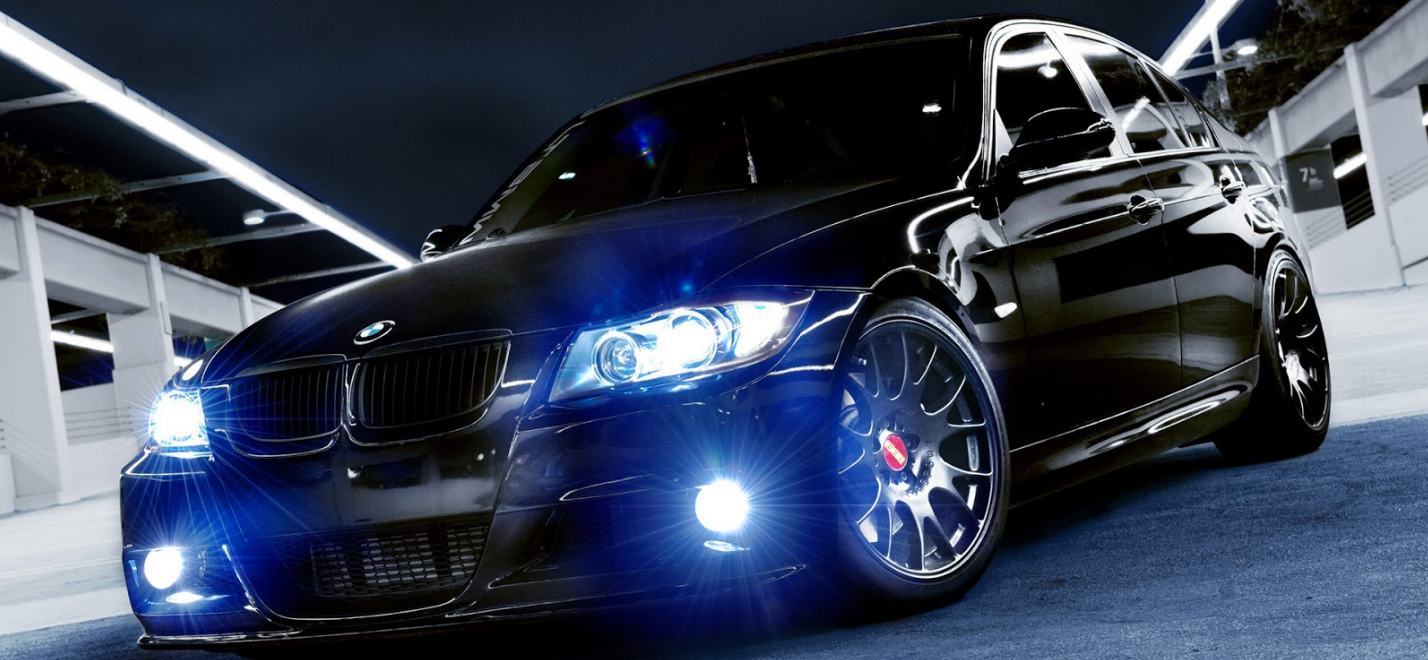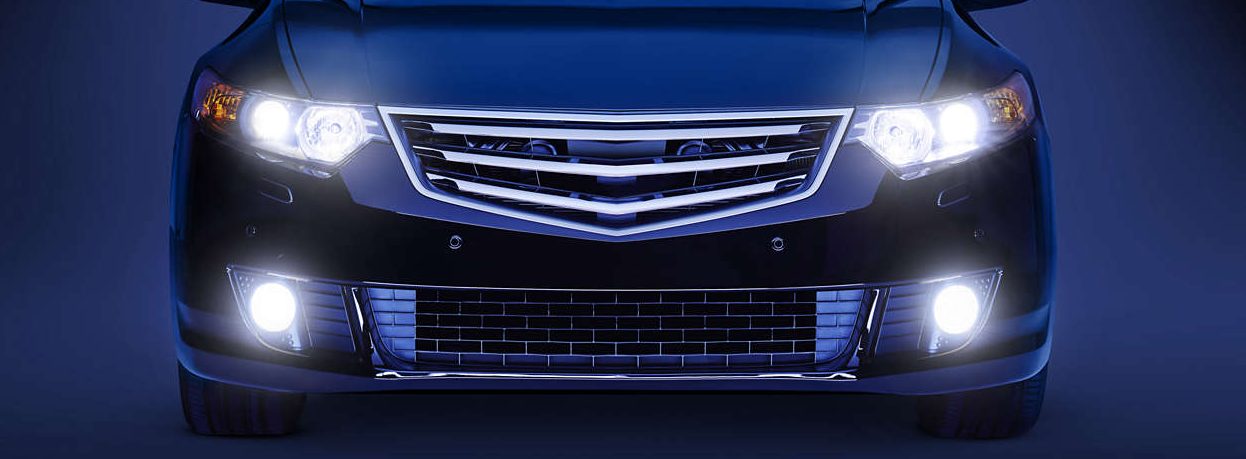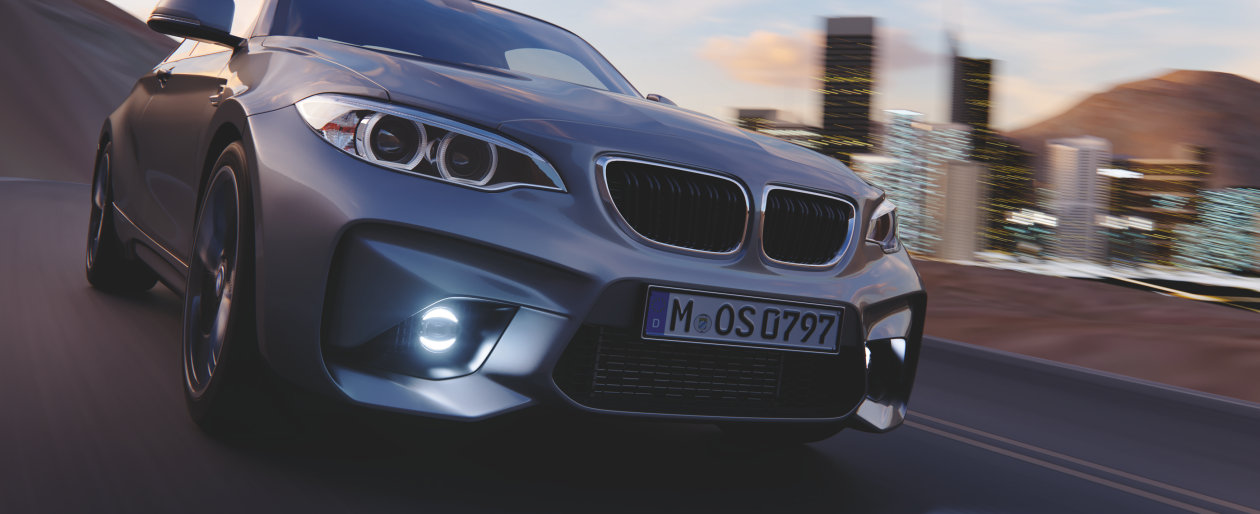A complete guide to car fog lights
Fog, extreme weather or darkness compounded by bad weather like snow can make driving really hard, even for experienced drivers. When driving in such low visibility, it is vital to know how to stay safe. Fog lights seem to cause some confusion with motorists in regards to what they are, how they work, and when to use and not use them.
What are Car Fog Lights?
All you need to know about vehicle fog lights

Photo on bestheadlightbulbs.com
Fog lights are lights present in your car either at the front or rear, and they are aimed low to light the road better. Unlike regular headlights which can cause glare when used in foggy weather. They are used when visibility is severely limited either due to fog or other conditions. They are entirely separate from the car’s headlights.Fog lights have a distinctive beam shape that is flat and wide and are placed low on the car either on the front or back bumper. The beams cut through the fog and illuminate the road well enough for the driver to stay on the road and in the right lane. Fog lights can also be used in extremely dusty or sandy conditions. Fog lights are a safety feature present in all cars.
Factors to consider when getting fog lights
- The light’s design – Most models are round, square or rectangular but there can be other oddly shaped lights available. Getting the right shape to ensure it will fit well.
- The color emitted by the light – Most lights are yellow as it is gentler and will not distract the other driver. Bright white lights are favorable because they have better illumination bet can cause more glare. There are blue fog lights, but they are mainly found in sports cars.
- The installation process – The brackets, shape, design and general characteristics of the lights will determine how easy it is to mount the lights.
- The price – The fog light kit or bulb you choose has to fit into your budget. LEDs are the most expensive followed by HIDs than halogens.
- The quality of the kit/ bulb – Opt for a good quality light that will not only give you excellent service but also last longer and save you some money. Be careful not to choose low-quality lights while trying to save some money; you might incur other costs later.
- The lumens – The lumens affect the type of beam emitted by the light. This is important as it will determine how far the light can shine and how well it will illuminate the road surface.
- The durability of the light – How well the light can handle shock and vibration is a key factor to consider. Getting a strong light will save you a lot on repair costs and avoid unexpected failures. The lifespan of the light is also a durability factor to consider. When of good quality and taken care of well, LEDs last the longest followed closely by HIDs and finally halogens, which have the shortest lifespan.
- The type of light bulb the fog light uses – The choice here is mainly between LEDs, HIDs, and halogens. Each bulb has its pros and cons. Once you know what these are you can go fo the bulb that best suits your needs.
- The energy efficiency of the light – This will depend on the type of bulb used in the light. The most energy-saving bulbs are LEDs followed by HIDs and finally halogens
- How quickly it lights up – This is also dependent on the bulb used. LEDs light up the fastest followed by halogens and then HIDs.

Photo on carid.com
Do all cars have fog lights?
Yes, all vehicles have rear fog lights. With the technological advancement in car lights technology, front fog lights seem obsolete, but rear ones are mandated by law to be present in your car. Front fog lights are optional and are often just a styling feature. They can be installed if the owner sees it fit.
Which lights should be used when driving in fog?
Ideally, fog lights should be used as they are made for this reason. Many vehicles come preinstalled with fog or driving lights. They are mounted low and aimed at the ground in front of the car as far as possible. The main difference between fog and driving lights is how they project their light. Fog lights can be clear or yellow, but driving lights are clear. Fog light beams are flat to reduce reflection and glare while being wide enough to light up the sides of the road so you can see curbs, rails, or road markings.Driving lights, on the other hand, are bright spotlights made to shine further than regular headlights.Either of these lights can be used in foggy conditions depending on which ones are equipped in your car because they will perform better than headlights.
Restrictions on the use of fog lights?
Due to the strength of fog beams, most areas have banned their usage unless in extreme conditions. When used in regular driving conditions, they may blind oncoming drivers or distract them with their light patterns. This can result in accidents. As soon as the fog or mist dissipates, drivers should switch back to using their headlights. You risk of being fined if you use fog lights in normal visibility. Fog lights are turned on by first turning on the ignition and switching on the head and tail lights. These have to be on low beam so that the fog lights work. Find the inner ring of the light controls and turn it to the symbol of fog lights. Then twitch the control lever, and this turns on the lights. Once you are done using them do not forget to turn them off.
Types of fog lights
A guide on automotive fog light types

Photo on philips.com
There are mainly two types of fog lights; Front and Rear fog lights.These are the two locations where fog lights are installed. Front fog lights enable the driver to see the road ahead and avoid obstacles on the path. Rear fog lights inform other drivers of the car in front of them. They are wired on a separate circuit from the rest of the car’s lighting. Front fog lights are usually white, but they can also be yellow or blue while rear ones are always red.
Fog Light bulbs types
Halogen
These are the cheapest bulbs in the market and are often used as the stock fitting in all fog lights. They are an OEM replacement for your busted or worn out lights.Advantages:
- No modifications are needed to put them in into the bulb housing.
- They come with the car, and it is easier to continue using them.
- They are the most affordable bulb option. And there are no hefty upfront costs as there are with LEDs.
- They have upgrade options that allow for more customization without changing bulb types.
- They are easy to replace
- They are universal
- They light up immediately with no warm-up delay.
- They cast light far enough to enable the driver to drive safely.
- They are dimmable
Disadvantages:
- It has a short lifespan due to the degradation of the filament.
- They are extra sensitive to shocks and vibrations.
- They are prone to heat
- They are not energy saving.
HID (High-Intensity Discharge)
These are ideal if longevity and performance are what you are looking for. They have a higher light output than any other bulb, except for some LEDs, although LEDs have other downsides. You can get replacement bulbs or conversion kits which you will need if the vehicle was equipped with a halogen stock light.Advantages:
- They produce the most intense, white bright light of all car bulbs.
- The light beams produced have the furthest reach, meaning they illuminate a wider area.
- They are energy efficient even though they need a lot of energy to light up. This reduces once they start producing very bright light while using very little power.
- They are cheaper than LEDs.
Disadvantages:
- They have fewer color options than LEDs. The way they are made makes it hard to get a wide color range.
- They create glare that can blind other motorists.
- They need some time to heat up before getting to the ideal brightness. Unlike LEDs which light up immediately, these can take up to 30 seconds.
- They are not dimmable, and the beam sharply cuts off instead of fading out, and this can take some getting used to.
- They are fragile and susceptible to shock and vibration.
- The light might need modification to use HID bulbs
LED
These are the new trend in automotive lighting. They are efficient, durable and can last a long time. They are very bright, which means you will be noticed by other drivers faster. LEDs are ideal for fog lights because they produce more focused light beams, which offer exceptional visibility. LED fog light bulbs should be 45-55 watts with a lumen rating from 1300-1500 anything lower than 1000 lumens is not recommended Advantages:
- They have a longer lifespan as no energy is wasted and they do not have a filament that is sensitive to movement or vibration.
- They are the most energy efficient bulbs
- They light up faster than other bulbs.
- They are easy to install
- They are often of good quality, shock, water, and dust resistant and are quite durable.
Disadvantages:
- They have a high initial cost.
- They require a cooling mechanism for the surrounding components which often heat up.
- The car light might need modification to use LED bulbs

Photo on osram.info
How to install fog lights?
A step by step guide to installing fog lights
Having fog lights can significantly improve your visibility in bad weather. Most kits have instruction manuals on how to put them in. Whether you are replacing your OEM fog lights or upgrading with aftermarket fog light kits, these steps will apply, here are some general steps you can follow:
First:
Choose the right fog light
- Before you do anything, see what the law says about the type and color of fog lights you can install.
- Select the bulb type you want, either halogen, HID or LED. Each has its advantages and disadvantages as earlier discussed. Pick the one that you find most suits you.
- Choose what style you will use to mount the light. There are three mounting categories:
- Bumper mount – these lights fit into holes designed and pre-cut into the bumper. They are usually round or rectangular. This the style in which most stock lights come in.
- Grill mount – the lights are mounted on the front grille or mounted behind it. They are larger round commonly found in trucks and SUVs
- Rack-mount – they are put on the car’s front bush guard and are round or rectangular.
Second:
Install your fog lights
- Make sure the car is off and as level as possible. Engage the parking brake.
- Open the hood and locate the fog lights or where they should be. They are usually below the headlights but if you have difficulty finding them check the car manual.
- Disconnect the switch from the car’s power system by detaching the clip.
- Remove any screws securing the fog light housing and keep them in a safe place.
- Remove the light an be careful not to scratch or damage the bumper. If it is a grille or rack mount, pull it away from the car to prevent damaging the car body.
- Insert the now light. It should fit well in the space left, and the bolt holes should line up correctly. If they do not, you may have gotten the wrong kit, and you will have to drill new ones.
- Secure the housing with the bolts from earlier, d not over tighten as you may damage the housing or bumper.
- Reconnect the switch using the clip. The light should work properly now.
- Start the car and turn them on. Ensure they
- You can now enjoy your new fog lights.
Fog light replacement should be done on a like with like basis. With car fog lights just ensure they are bright enough and that they do not blind other drivers.